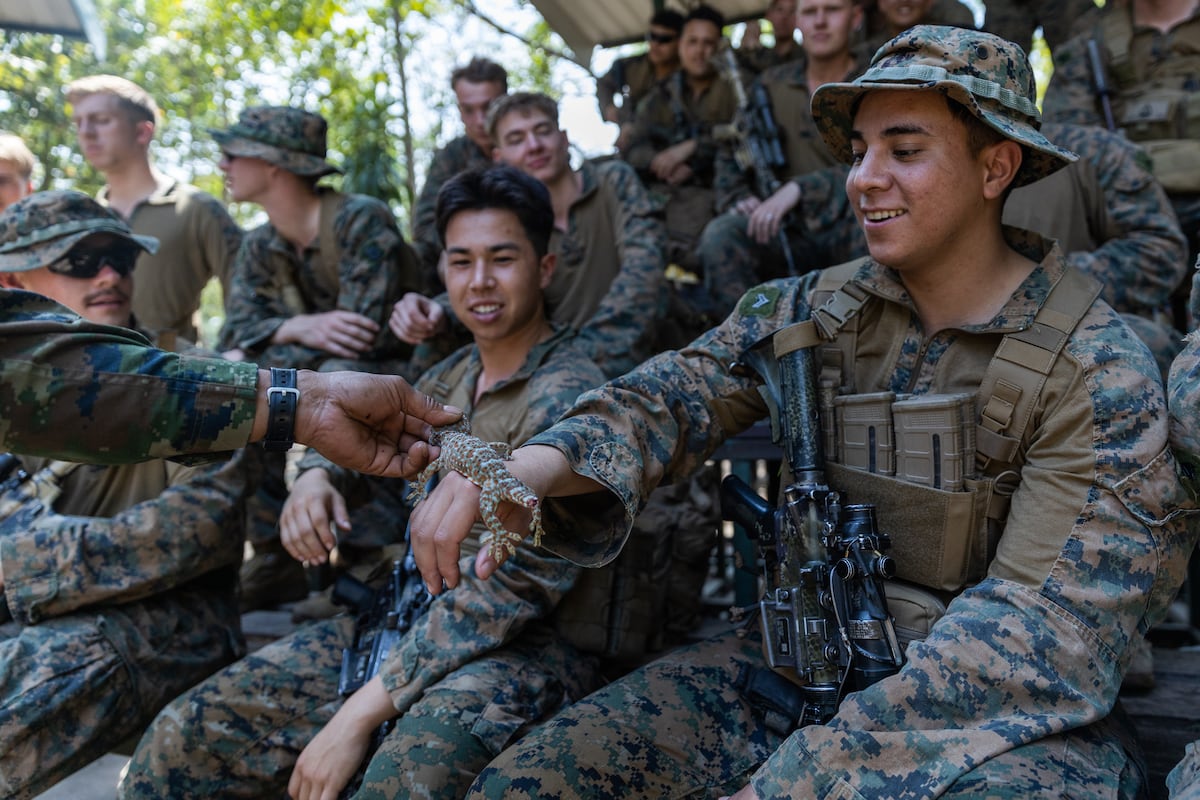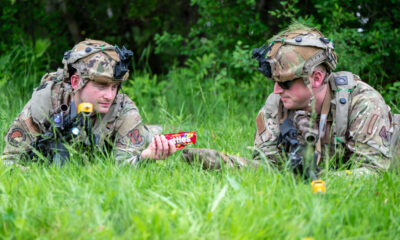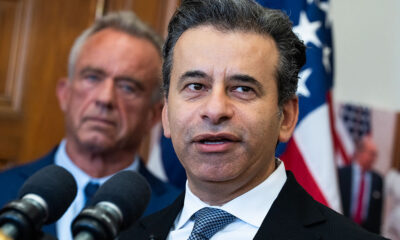World
Military Units Honor Reptilian Resilience on National Reptile Day

Tuesday, October 17, 2023, marks National Reptile Awareness Day, a celebration that highlights the importance of reptiles in various ecosystems and human history. In the U.S. military, this appreciation transcends mere curiosity. Reptilian mascots and call signs, such as cobras and alligators, are prominent in patches, aircraft, and unit logos. These creatures symbolize values such as patience, precision, and power that resonate with service members.
Reptiles embody a primal toughness that aligns closely with military training. A cobra strikes without warning, while an alligator remains motionless until the opportune moment. This instinct for timing parallels the discipline required of military personnel. For instance, a sniper may hold their breath for hours before taking a shot, much like an alligator waiting underwater to ambush its prey. Both examples highlight the importance of control over chaos.
Historical Ties to Reptilian Symbolism
The connection between reptiles and military identity has shaped unit heritage for generations. During World War II, the U.S. 158th Infantry Regiment earned the nickname “Bushmasters” after repeated encounters with the deadly bushmaster snake in Panama and the Pacific. This designation was not merely for flair; it symbolized resilience in the face of survival challenges. Today, the image of the bushmaster remains part of the regiment’s insignia.
Reptiles thrive in the harsh environments where U.S. forces have engaged in combat, including deserts, swamps, and jungles. This shared toughness has made them natural emblems for military units. For example, Marines in amphibious assault units in Iraq and Afghanistan often referred to themselves as “Gators,” reflecting their versatility in navigating both land and water. This adaptability has become a key aspect of their identity.
The 75th Field Artillery Regiment has formalized this connection through its distinctive unit insignia, which features a gold lizard on a red shield. The design honors the regiment’s roots in Alabama, historically known as the “Lizard State.” This emblem embodies quickness and survival, characteristics that define the artillerymen under its banner.
Practical Applications of Reptilian Names
Reptilian call signs and nicknames serve practical purposes as well. In radio communication, concise names like “Cobra One” or “Viper Six” cut through static and confusion. These names are aggressive, clear, and easy to remember, with sharp consonants that convey decisiveness. Over time, such names become part of a unit’s mythology, fostered by pride and tradition.
The Vietnam War marked a significant evolution in the connection between reptiles and military aviation. The introduction of the Bell AH-1 “Cobra” helicopter in 1967 established a lasting link between the aircraft’s lethal precision and the snake it was named after. The helicopter’s speed and firepower solidified the cobra as a symbol of American air dominance, a legacy that continues with the modernized AH-1Z “Viper.”
Reptilian imagery also finds a place in the Army’s heraldic tradition. The 3rd Armored Cavalry Regiment previously adopted the motto “Brave Rifles, Scales of the Dragon,” merging reptilian symbolism with mythology to convey unity and strength. Similarly, the Marine Corps’ Amphibious Assault Schools in California informally refer to themselves as “the Gator School,” honoring their amphibious heritage linked to World War II landings.
Reptiles have played a role in military symbolism worldwide for millennia. In ancient Egypt, crocodiles represented power and protection, with the crocodile god Sobek invoked for strength in military endeavors. This instinct to channel the strength of reptiles persists in modern military patches, coins, and mottos, conveying a timeless message: be patient, strike hard, and survive.
The term “cold-blooded” has also emerged as a descriptor for service members, denoting the ability to operate without emotion. This characteristic signifies the execution of missions despite fear, fatigue, or doubt. It reflects the focused discipline exhibited by an alligator as it prepares to snap its jaws shut.
When observing a call sign like “Cobra One” or a gator insignia on a uniform, one witnesses more than mere branding. These symbols represent decades of storytelling, myth-making, and tradition. Reptiles, having survived longer than most species on Earth, embody adaptability, endurance, and dominance. It is no surprise that service members, trained to exhibit similar qualities, resonate with these creatures.
From the jungles of the Pacific to the deserts of Iraq, and from the cockpits of attack helicopters to the beaches of Camp Pendleton, reptiles have remained some of the military’s most enduring symbols. They encapsulate readiness, resilience, and survival. When a soldier earns a patch featuring a gator’s jaw or a coiled snake, they join a lineage that spans decades of dedicated service.
-

 Science1 week ago
Science1 week agoResearchers Challenge 200-Year-Old Physics Principle with Atomic Engines
-

 Politics7 days ago
Politics7 days agoNHP Foundation Secures Land for 158 Affordable Apartments in Denver
-

 Health1 week ago
Health1 week agoNeuroscientist Advocates for Flag Football Until Age 14
-

 Lifestyle1 week ago
Lifestyle1 week agoLongtime Friends Face Heartbreak After Loss and Isolation
-

 World1 week ago
World1 week agoTroops to Enjoy Buffalo Chicken, Thai Curry in 2026 MREs
-

 Health7 days ago
Health7 days agoFDA Launches Fast-Track Review for Nine Innovative Therapies
-

 Top Stories1 week ago
Top Stories1 week agoUnforgettable Moments: The Best Victoria’s Secret Performances
-

 World1 week ago
World1 week agoGlobal Military Spending: Air Forces Ranked by Budget and Capability
-

 Politics1 week ago
Politics1 week agoMassachusetts Lawmakers Resist Audit After Voter Mandate
-

 Business1 week ago
Business1 week agoMaine Housing Inventory Surges to Post-Pandemic High
-

 Politics1 week ago
Politics1 week agoIsraeli Air Strikes in Lebanon Kill One, Wound Seven Amid Tensions
-

 Lifestyle1 week ago
Lifestyle1 week agoJump for a Cause: San Clemente Pier Hosts Fundraiser Event









